I-Day 2023: A look back at the gritty women who fought during the freedom struggle
Would India have attained freedom if women hadn’t participated in the freedom struggle against the British raj? From known heroes such as Annie Besant and Sarojini Naidu to forgotten names like Rani Chennamma and Accamma Cherian, here’s how they shaped the nation’s independence

Women participate in the Swadeshi movement during India's freedom struggle. Image Courtesy: @MahilaCongress/Twitter
Women Power. We often talk about it today – where women stand, their role in society and their significance to the world. But women have always done their bit at home and beyond. Take for instance, India’s freedom struggle.
Today, pages of history are filled with the names of eminent male freedom fighters. But, in the struggle for independence from the British raj, there are numerous women who stood tall and resolute and shoulder to shoulder with the men. The truth is without the help of women movements and women freedom fighters an independent India would have remained but a dream.
As we mark another year of freedom – it is the 76th year of independence – from the yoke of the British, let’s take a closer look at how women contributed to the struggle, becoming heroes in the process.
Related Articles
Leading from the front
Women’s participation the freedom struggle can be dated back to 1817 when women like Bhima Bai Holkar, Rani Chennamma of Kittur, and Rani Begum Hazrat Mahal of Awadh fought against the East India Company even before the First War of Independence in 1857.
For the uninitiated, in 1817, Bhima Bai Holkar fought bravely against the British colonel Malcolm and defeated him in guerrilla warfare. Fast forward to 1857, and the tale of Rani Laxmibai is known to all. The Queen of Jhansi refused to cede her territory and she decided to join the uprising in 1857. Cornered by the British, she escaped from Jhansi fort. She was wounded in combat near Gwalior’s Phool Bagh, where she later died. Sir Hugh Rose, who was commanding the British army, had described her as “one of the most dangerous Indian leaders”.
Rani Chennamma is another example of women leading from the front in the country’s freedom struggle. The queen of Kittur, she fought back against the attempt to control her dominion in 1824 after the death of her young son. Such was her valour that she led the victory against the British in her first revolt. However, she was later captured and imprisoned by the East India Company.
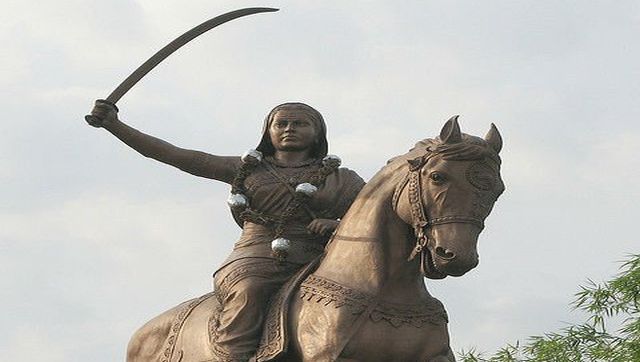
There’s also Rani Begum Hazrat Mahal of Awadh, who along with her supporters, took on the British and wrested control of Lucknow after her husband – Nawab of Awadh Wajid Ali Shah – was exiled after the 1857 revolt.
But even before these tales of heroism emerged, there was the only and only Velu Nachiyar. Many years before the 1857 revolt, Nachiyar, who had married the king of Sivagangai – fought bravely and victoriously against the British. According to the Indian government’s Amrit Mahotsav website, she was the one to produce the first human bomb as well as establish the first army of trained women soldiers. It is reported that her army commander Kuyili set herself ablaze and walked into a British ammunition dump.
Besides their strength and courage at battles with the British armies, notable Indian women also paved way for social change and have contributed to the making of Indian society.
Amid the swing of the freedom struggle
In the late 19th and the beginning of the 20th century, the freedom struggle began to take full swing and women from across all castes and class took the baton of being equally responsible and dedicated to the national cause. Where men of stature such as Mahatma Gandhi, Pandit Jawaharlal Nehru, Subhas Chandra Bose and Chandrasekhar Azad emerged as leaders in their own right, women stalwarts too matched them step to step. Today, we are aware of some of them – Sarojini Naidu, Annie Besant, Madam Cama, Kamala Nehru, Vijay Lakshmi Pandit, Aruna Asaf Ali, Kasturba Gandhi.
But there are countless others who fought for India’s freedom. One of them was Rani Gaidinliu. Born in 1915 in present-day Manipur, this Naga spiritual and political leader rebelled against the Empire, and refused to pay taxes, asking people to do the same. The British launched a manhunt, but she evaded arrest, moving from village to village.
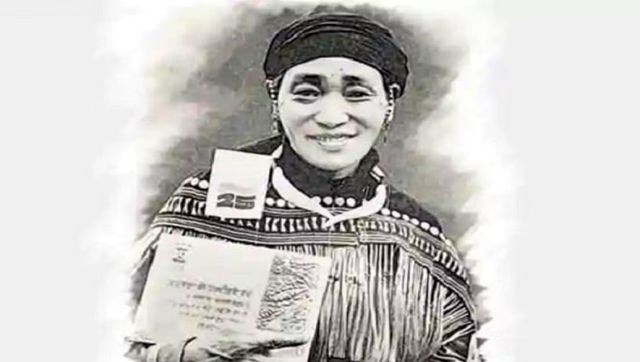
Gaidinliu was finally arrested in 1932 when she was just 16, and later sentenced for life. She was released in 1947. Prime Minister Jawaharlal Nehru described Gaidinliu as the “daughter of the hills”, and gave her the title of ‘Rani’ for her courage.
In 1921, after the arrest of her husband, Chittaranjan Das, Basanti Devi too joined the freedom struggle and participated in agitations such as the civil disobedience movement. She also was a participant in the Nagpur session of the Indian National Congress in 1920. She even briefly went to prison for selling Khadi in Kolkata.
Another significant name that is missing from the annals of history is Ramadevi Choudhary. Influenced by Mahatma Gandhi, she joined the movement in 1921 and went door to door to convince people to join the non-cooperation movement. She actively took part in the salt satyagraha and was imprisoned several times during the struggle for freedom. Post-independence, she dedicated her life to social causes and set up training centres for tribals, worked for famine relief, and even actively protested against the Emergency.

In the Kakori conspiracy of 1925, the role of Raj Kumari Gupta is rarely mentioned. But if it wasn’t for this brave woman from Banda Zilla of Kanpur, the operation may not have even taken place. It was Gupta who was given the charge of supplying revolvers to those involved in the operation. She hid the firearms in her undergarment and set out in khadi clothes to deliver them, with her three-year-old son in tow. On being arrested, she was disowned by her husband’s family and thrown out of her house. But Gupta had no regrets and was once quoted as saying, “Humko jo karna tha, kiya” (What I had to do, I did).”
In 1938, came along Accamma Cherian, a freedom fighter from the southern state of Kerala. Dubbed as Jhansi Ki Rani (Queen) of Travancore by none other than Mahatma Gandhi, Cherian is one of the unsung heroes of India’s freedom struggle. In 1938, the British declared the Travancore State Congress. To protest this, she led thousands of people to the royal palace in Travancore (now called Kerala). When the British police chief ordered his men to fire on the rally, she cried, “I am the leader; shoot me first before you kill others”. Her courageous words forced the police authorities to withdraw their orders.
Many, many years later, Kandathil Sebastian, a social scientist based in Delhi wrote about Cherian: “For more than 15 years she was probably the toughest woman in public politics in Travancore and was at the forefront of the momentous people’s struggle in Travancore in the pre-independence era.”
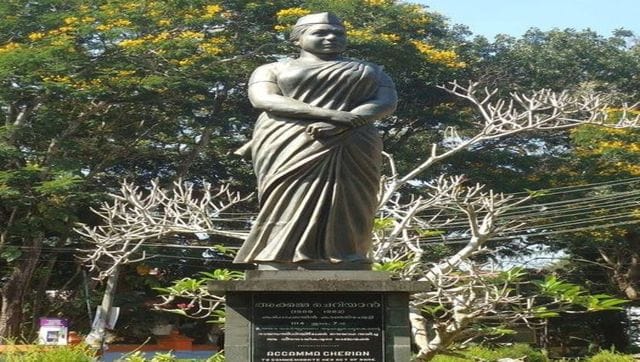
During the Quit India Movement of 1942, several women played a significant role. One of them was Matangini Hazra. She was shot dead by the British Indian police in front of the Tamluk Police Station (of erstwhile Midnapore District) on 29 September 1942.
There’s also the unforgettable contribution of Tara Rani Srivastava. Born in Bihar’s Saran, she had married Phulendu Babu. She joined the Quit India Movement of Mahatma Gandhi in 1942, regulated protests and planned to raise the Indian flag on the roof of the Siwan Police Station. She managed to gather a crowd and began her march towards the Siwan Police Station, shouting ‘Inquilab’. When they were marching towards the police station, the police opened fire. Phulendu was hit and fell to the ground. Undeterred, Tara bandaged him with the help of her sari and continued to lead the crowd towards the station shouting ‘Inquilab’ while holding the Indian flag. Her husband died, but Tara continued her unflinching support for the freedom struggle.
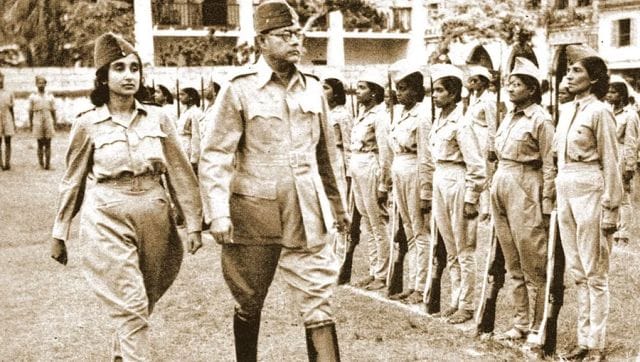
Lakshmi Sahgal, who served in Subhas Chandra Bose’s Indian National Army, is another example of women’s participation in the freedom struggle. Growing up, she was training to be a medical student but was drawn to the freedom struggle. She joined the Indian Independence League formed by veteran freedom fighter Rashbehari Bose in 1941. She played an active role in the formation of the all-women infantry regiment of the INA and then became Captain Lakshmi.
Captain Lakshmi was arrested by the British army in May 1945. She remained under house arrest in the jungles of Burma until March 1946, when she was sent to India – at a time when the INA trials in Delhi were intensifying the popular hatred of colonial rule.
Indirect participants of India’s freedom struggle
Apart from these names, countless of women participated in the battle for India’s independence, indirectly. Not only did they shoulder financial responsibilities when the men of the houses were arrested, but they also encouraged their family members to actively participate in the various movements against the oppression of the British rule.
The Swadeshi movement was largely successful because women opted to forego western goods. Thousands of other women participated in rallies, raids and stone picketing during the Civil Disobedience Movement and the Dandi Salt March of 1930. Many women, such as Usha Mehta also spread the information of such marches, which was crucial to national activism.
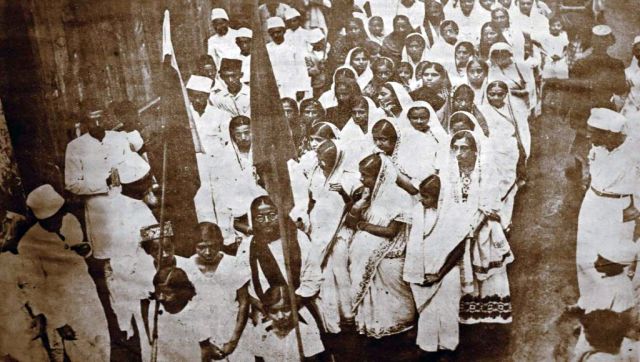
Women’s participation became so overwhelming by the 1940s that they came to be known as “the disciplined soldiers of Indian freedom”.
On this Independence Day, it is therefore, time that we acknowledge the grit and determination, the courage to look death in the eye and their intense love for the motherland displayed by women during the freedom struggle. As we celebrate this momentous occasion, we should rethink and reframe the narrative of the Indian freedom struggle and give women their due.
With inputs from agencies
also read

Independence Day 2023: Remembering our freedom fighters from Bal Gangadhar Tilak to Lala Lajpat Rai
Bal Gangadhar Tilak was one of the strongest advocates of Swaraj. One of his most famous quotes was, "Swaraj is my birthright and I shall have it!".

76th Independence Day: What is the ‘Meri Mati Mera Desh’ campaign announced by PM Narendra Modi?
During the 103rd edition of Mann Ki Baat on 30 July, PM Narendra Modi announced the ‘Meri Mati Mera Desh’ campaign to honour India’s martyred bravehearts. Under this programme, which will be launched on 9 August, soil collected from across the country will be brought to Delhi

Independence Day 2023: India's journey into space to the Emergency, historical events that shaped the country
Independence Day 2023: The 1982 Asian Games marked the debut of colour television in India. The opening ceremony of the Asian Games was broadcast in colour into citizens' homes


